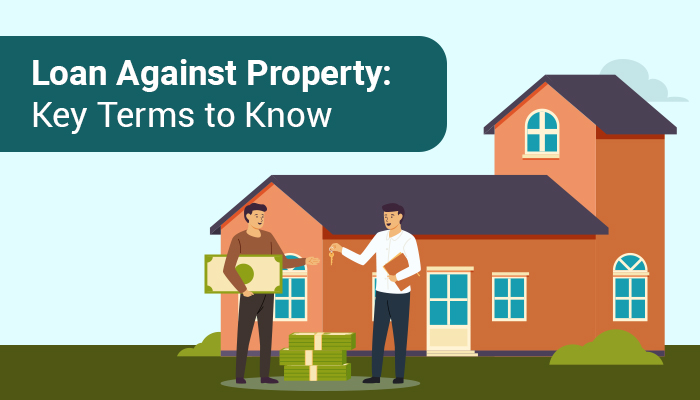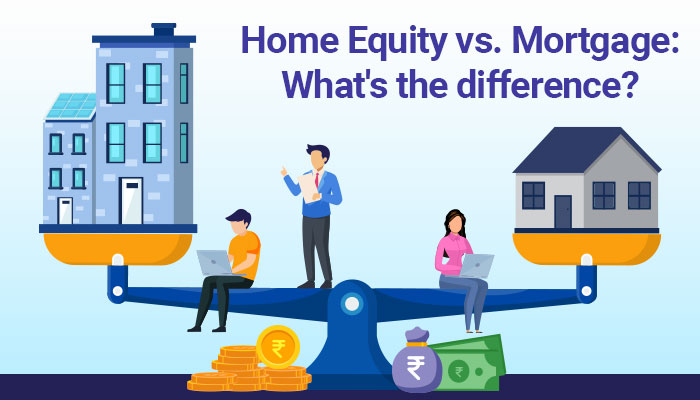Loan against Property Glossary & Terminology to know

A loan against property (LAP) is a type of secured loan where your property acts as collateral. This means the lender can seize your property if you default on the loan. LAPs are a popular choice for individuals and businesses seeking substantial sums of money for various purposes. Through this article, you can learn about the various important terms of LAP.
Understand the basics
Before getting into anything complicated, here's what you are learning about.
- Loan Against Property (LAP): It is a secured loan that allows you to leverage the value of your property to access a substantial loan amount. Whether residential or commercial, the property is kept as collateral, and the borrower retains ownership and possession. It’s an ideal option for those who need funds for various purposes, from expanding a business to handling personal financial commitments, without selling their valuable assets.
-
Collateral: It's the property you pledge to secure the
loan. The lender holds a legal claim over the asset until the loan is
fully repaid. If the borrower defaults, the lender can auction the
collateral to recover the outstanding loan amount. This makes LAP a less
risky option for lenders, often resulting in lower interest rates
compared to unsecured loans.

Caption: an image highlighting the give and take of collateral, and receiving money against it
- Loan-to-Value (LTV) Ratio: It refers to the amount of loan you can get as a percentage of your property's market value. Typically, lenders offer between 60% and 75% of the property's value as a loan. This ratio is a crucial factor in determining both your loan amount and your risk exposure—a lower loan-to-value ratio means less risk for the lender and more manageable EMIs (equated monthly instalments) for the borrower.
Types of LAP
Loan against Property has various types of loans depending on your needs. Here are some of these:
- Mortgage Loan: It is the most common form of loan against property, where you can use your residential property as collateral. It offers significant flexibility in how you use the funds, whether for a child’s education, medical emergencies, or even home renovations. The interest rates on mortgage loans are usually competitive, making it one of the most preferred choices among borrowers.
- Commercial Property Loan: If you own a commercial property, such as an office space or shop, you can avail of a commercial property loan. This is particularly advantageous for business owners looking to raise capital for business expansion. Commercial property loans typically have different interest rate structures and eligibility criteria compared to residential loans, as the risk factors vary.
- Bridge Loan: It is a short-term loan designed to "bridge" the gap between purchasing a new property and selling an existing one. Although bridge loans tend to have higher loans against property interest rates due to their short tenure, they are valuable for property investors or individuals in urgent need of liquidity.
Interest Rates and Repayment
-
Fixed vs. Floating Interest Rates
When opting for a LAP, you’ll often be faced with the choice between fixed and floating interest rates. Fixed rates remain constant throughout the loan against property tenure, providing stability in EMI payments, but they may be slightly higher than floating rates. Floating rates, on the other hand, fluctuate based on market conditions, which can either increase or reduce your EMI over time. Understanding which option suits your financial planning is crucial to long-term loan management -
EMI Calculation
Your EMI depends on the loan amount, interest rate, and loan tenure. Longer tenures result in smaller EMIs but higher overall interest payments. Shorter tenures mean higher EMIs but lower interest outgo. Calculating your EMI through a loan against property calculator beforehand helps ensure that your monthly payments fit comfortably within your budget. -
Prepayment Penalties
While paying off your loan early might seem like a good idea, some lenders impose prepayment penalties to compensate for the lost interest income. It’s essential to read the fine print and understand whether your loan allows for prepayment without penalties. Avoiding hidden charges like these can save you a significant amount of money over the loan tenure.
Eligibility Criteria
Now that we know the basics of a LAP, you must understand the loan against property eligibility terms to apply for the loan.
- Property Ownership: To apply for a LAP, you must be the legal owner of the property being used as collateral. This can include both individuals and businesses, provided the property is free from legal disputes or encumbrances. Joint ownership is also permissible, but all owners must be co-applicants on the loan.
- Income Proof: Lenders require applicants to provide proof of steady income to ensure they can repay the loan. Salaried individuals will need to submit salary slips and bank statements, while self-employed professionals may need to provide profit and loss statements, tax returns, and other relevant financial documents required for loans against property. A strong financial profile increases your chances of loan approval and may also help you negotiate favourable terms.
- Credit Score: Your credit score is a reflection of your financial behaviour and repayment history. A high credit score—typically 750 or above—makes you a more attractive applicant for a loan against property. It signals to lenders that you are reliable and less likely to default on the loan. A good credit score can also lead to more favourable interest rates, saving you money in the long run.
Wrapping Up
Understanding the terminology and processes involved in Loan Against Property can empower you to make informed decisions. Whether it’s choosing the right type of loan, negotiating interest rates, or preparing your documents, a solid grasp of LAP basics will help ensure a smooth borrowing experience. If you’re looking to secure competitive interest rates and expert guidance, IIFL Home Loan can assist you with your financial needs.
FAQs
Q1. What is the loan-to-value ratio?
The loan-to-value ratio refers to the percentage of the property value that can be borrowed as a loan. It usually ranges between 60-75%.
Q2. Can I prepay my loan against the property?
Yes, but some lenders may charge a prepayment penalty. Always check the terms before proceeding.
Q3. What is the difference between fixed and floating interest rates?
Fixed rates stay constant while floating rates vary with market conditions.
Q4. What happens if I default on my LAP?
The lender has the right to auction the property to recover the outstanding loan amount.
Q5. How long does it take to get a loan against property approved?
It typically takes between 1-2 weeks, depending on documentation and evaluation processes.
Tags
Disclaimer: The information contained in this post is for general information purposes only. IIFL Home Finance Limited (including its associates and affiliates) ("the Company") assumes no liability or responsibility for any errors or omissions in the contents of this post and under no circumstances shall the Company be liable for any damage, loss, injury or disappointment, etc. suffered by any reader. All information in this post is provided "as is", with no guarantee of completeness, accuracy, timeliness, or of the results, etc. obtained from the use of this information, and without warranty of any kind, express or implied, including, but not limited to warranties of performance, merchantability, and fitness for a particular purpose. Given the changing nature of laws, rules, and regulations, there may be delays, omissions, or inaccuracies in the information contained in this post. The information on this post is provided with the understanding that the Company is not herein engaged in rendering legal, accounting, tax, or other professional advice and services. As such, it should not be used as a substitute for consultation with professional accounting, tax, legal or other competent advisers. This post may contain views and opinions which are those of the authors and do not necessarily reflect the official policy or position of any other agency or organization. This post may also contain links to external websites that are not provided or maintained by or in any way affiliated with the Company and the Company does not guarantee the accuracy, relevance, timeliness, or completeness of any information on these external websites. Any/ all (Home/ Loan Against Property/ Secured Business Loan/ Balance Transfer/ Home Improvement Loan/ NRI Home Loan/ Home Loan for Uniformed Services) loan product specifications and information that may be stated in this post are subject to change from time to time, readers are advised to reach out to the Company for current specifications of the said (Home/ Loan Against Property/ Secured Business Loan/ Balance Transfer/ Home Improvement Loan/ NRI Home Loan/ Home Loan for Uniformed Services) loan.
 Login
Login















